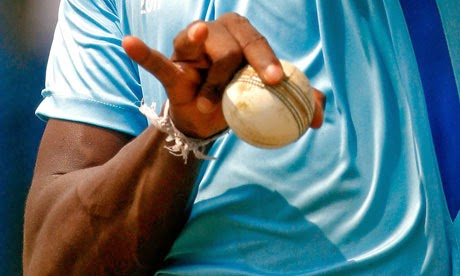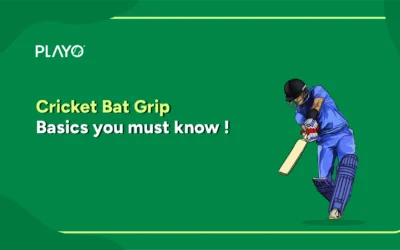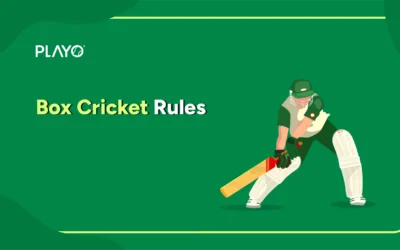Bowlers need to be smarter to succeed in T20 cricket, here are 5 new deliveries which became popular due to the shortest format of the game.
ViaT20 cricket became a global phenomenon almost a decade back. Its arrival tipped the delicate balance between bat and ball towards the willow.
Batting-friendly pitches, shorter boundaries and heavier bats blunted every type of bowling delivery in the players’ arsenal.
It did not help that the shortest format of the game needed more runs to satisfy the ‘entertainment’ quotient for its organizers.
However, just like nature always moves towards balance through evolution, cricket and its bowlers evolved. A decade on, the expert white ball bowlers have developed and mastered different types of deliveries to counter the batsmen.
While some were already invented before, they really came to the fore through T20 cricket. Meanwhile, a few others were developed due to the demands of the format or picked up from other sports.
Without further ado, let’s take a look at FIVE types of deliveries which became popular primarily due to T20 cricket.
-
Slower Ball
If there is one delivery all quick bowlers have in their armoury these days, it is the slower one.

Via
While the delivery was in existence in One Day Internationals, its real utility came in T20s. Primarily bowled with a deep grip or from the back of the hand, slower balls provide a delightful variation in pace for quicks.
This type of delivery is exceedingly effective on slow pitches as the reduced pace of the ball makes it difficult for the batsman to time it to perfection. Bowlers such as Bangladesh’s Mustafizur Rahman bowl slow cutters while Australian James Faulkner is the perfect example for accurate back-of-the-hand slower deliveries.
https://www.youtube.com/watch?v=vSFNEbC16O8
A special mention for West Indies and Chennai Super Kings’ Dwayne Bravo, who is arguably the best exponent of the delivery at the moment. He releases the ball above the batsman’s eye level, similar to a full-toss. However, the ball dips alarmingly, turning into a yorker as it reaches the batsman. No wonder the West Indian is the master of T20 bowling.
-
Slow Bouncer
When one can bowl a slow yorker or a cutter, why not a slow bouncer? As simple as it sounds, its execution is tougher.
South Africa’s Shaun Pollock is usually credited for making the delivery famous and Australia’s Shane Watson used it to great effect for Rajasthan Royals.
Another South African Morne Morkel usually bowls the delivery by holding the ball deep and rolls his fingers similar to an off-cutter at the point of release. It is really important to maintain a regular bowling action to deceive the batsman and hit the pitch as hard as possible.
The batsman will get into his stroke early and it could lead to a wicket more often than not. However, a poorly-bowled delivery can see the ball land in the stands, highlighting the fine margins. Nevertheless, the tough execution brings out the bowler’s quality and makes him/her special for the team.
-
Carrom Ball
The carrom ball originated in the early 1940s but returned to the game in the past decade. Sri Lanka’s Ajantha Mendis was the first to use it in the modern era back in 2008 and Ravichandran Ashwin, current captain of Kings XI Punjab, mastered it successfully.
The uniqueness of the delivery lies in both its grip and release. The bowler generally holds the ball between the thumb, forefinger and the middle finger. At the time of release, the ball is flicked using the thumb and middle finger, similar to flicking the striker disc in the game of carrom. This is different from the traditional spin bowling where we see the clockwise or anti-clockwise movement of the wrist (leg-spin) or fingers (off-spin).
The carrom ball is a key weapon in every mystery spinner’s armoury, as seen with West Indies and Kolkata Knight Riders’ Sunil Narine. This difficult art once mastered, enables the bowler to turn the ball either way. Naturally, only a select few can execute the delivery in crunch moments.
-
Knuckle Ball
Another delivery picked up from a different sport is the knuckleball. This delivery has its origins in baseball and recently transcended to cricket. The name itself is a misnomer as the ball is generally released using the fingertips and not the knuckles.
The ball is held using the fingernails and released with the same, reducing the pace and removing any spin. On hitting the surface, the ball tends to skid, confounding the batsman. India and Sunrisers Hyderabad’s Bhuvneshwar Kumar is the specialist in this department.
https://www.youtube.com/watch?v=vgKqQ-rVGaY
Another international bowler using the knuckleball currently is Australia and Kings XI Punjab’s, Andrew Tye. Only a few bowlers can execute the delivery with the needed precision and currently, it is one of the toughest deliveries for batsmen to pick in world cricket.
-
Wide Yorker
In this case, the emphasis is more on the line and length than the grip and release as seen with the previous deliveries.
Modern-day T20 batsmen can score big off almost any delivery bowled on to their pads, irrespective of the line and length. In such a scenario, the wide yorker becomes all the more important.
As the name suggests, the bowler pitches the ball full and wide of the off-stump close to the wide line. This way, it becomes difficult for the batsmen to get underneath the delivery or execute a pre-meditated shot.
This ploy has proven to be effective in the death overs against top hitters with low footwork such as Chennai Super Kings captain, Mahendra Singh Dhoni. These players have to stretch to reach the ball, making it difficult to score off it.
While it sounds simpler to execute, the real challenge lies in maintaining accuracy. Missing the line or the length can either result in a wide or a full toss or within the batsman’s scoring arc, ending in runs. However, the rewards are just as high as it could result in a dot ball, piling up the pressure on the batsman for the next delivery.
Conclusion
Thus, these are the 5 types of deliveries which came into prominence to counter the batsmen-friendly T20 cricket. As the sport evolves, we can look forward to witnessing further bowling variations in the gentleman’s game.
FOLLOW US ON INSTAGRAM FOR SPORTS MEMES AND REELS!








0 Comments